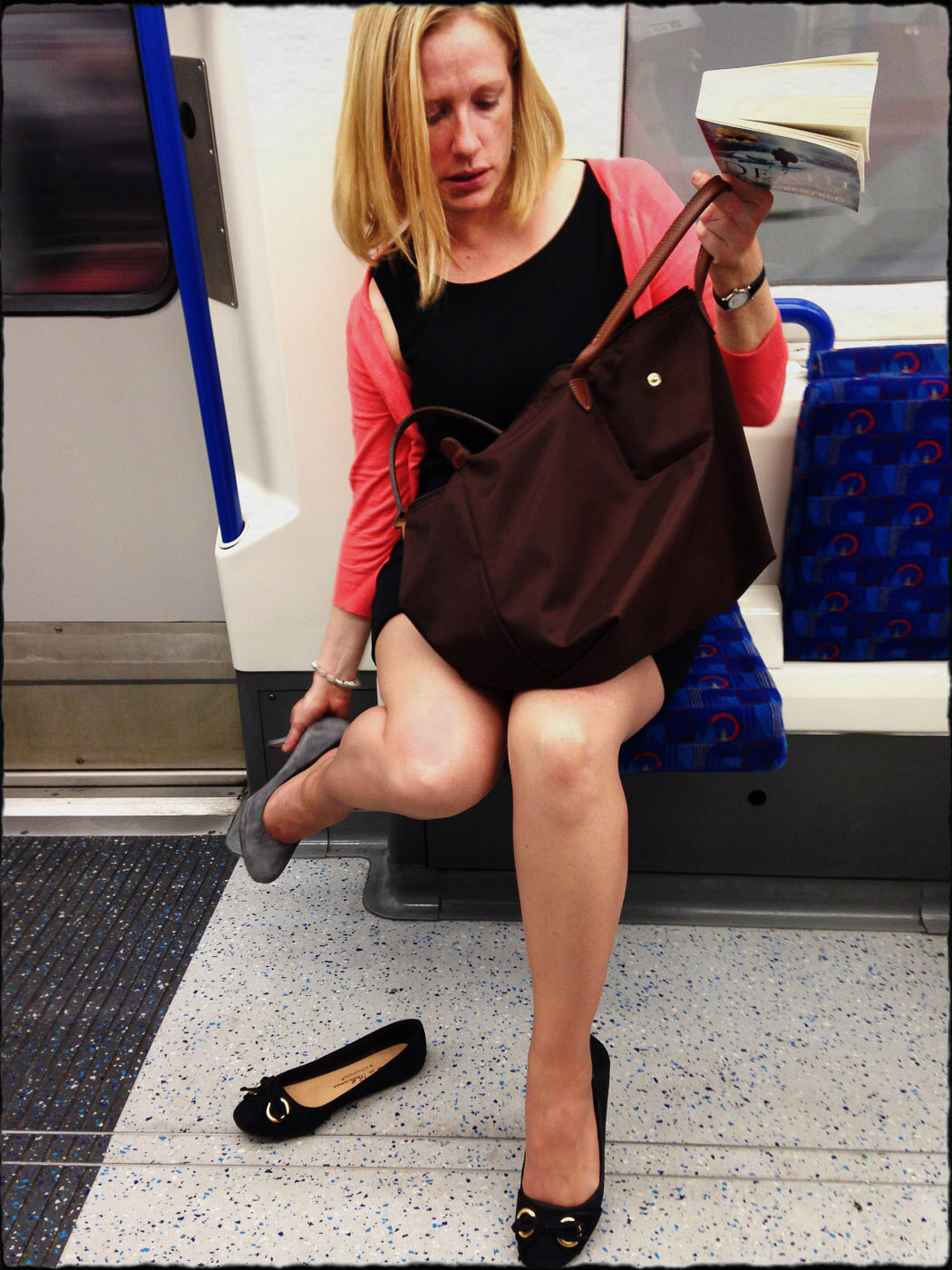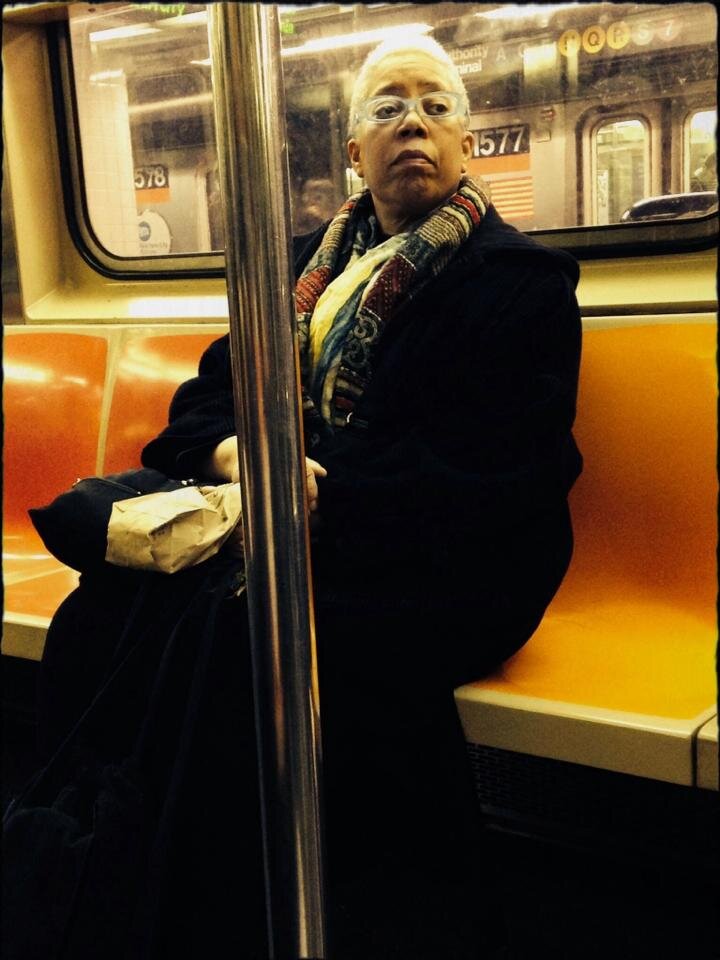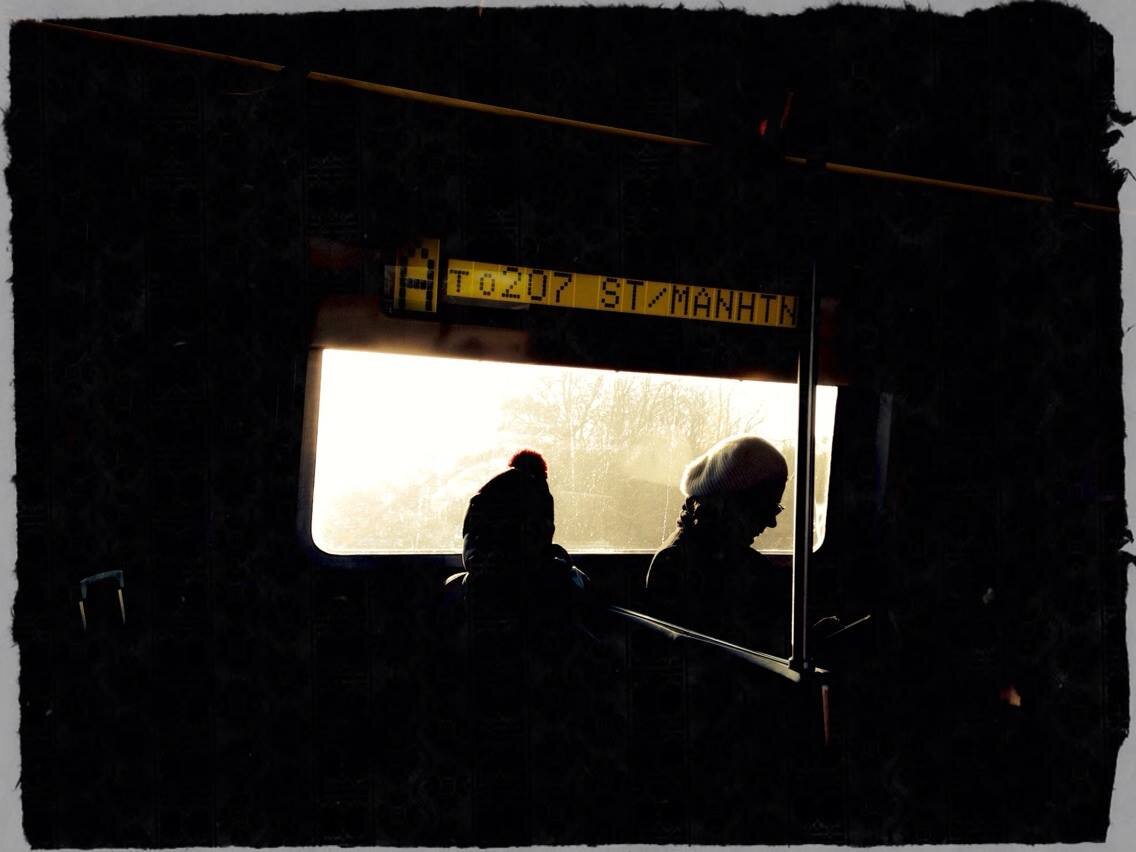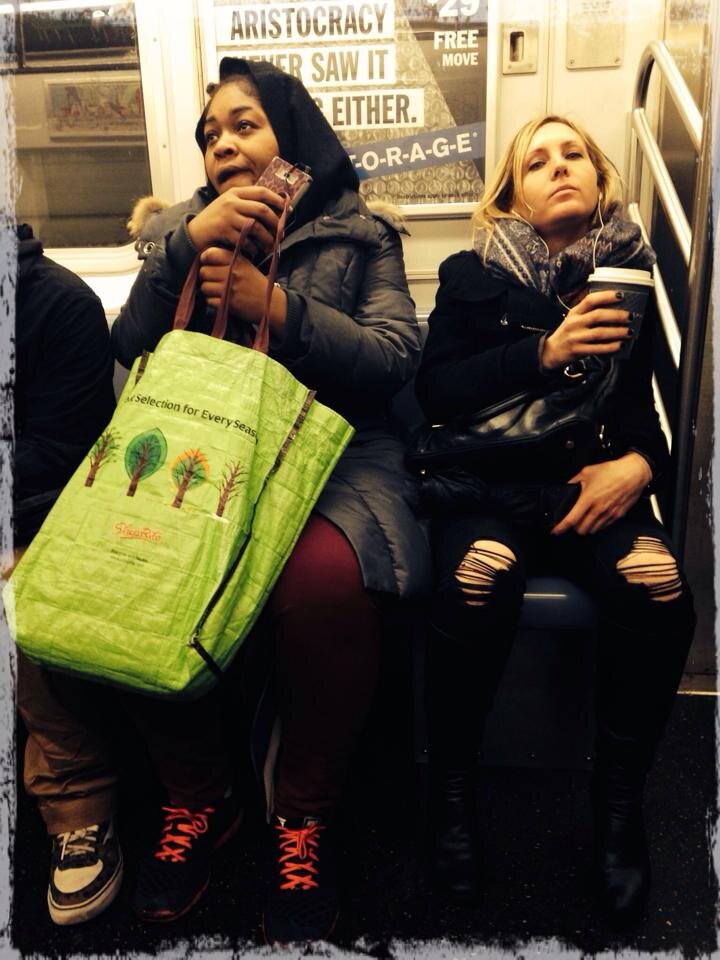Tube (2014 –2017)
I get claustrophobic and anxious in the underground. This series kept me distracted for a while. These photographs, from the London, New York and Hong Kong underground, were taken between 2014 and 2017. I liked the harsh light of the carriages, and the rough, un-nuanced quality of these images taken on my mobile phone with the sound turned off, as I pretended to read or be tapping away on some random app. You can see my faux nonchalant reflection in the window in one of the images. The knowledge that I was doing something without people’s consent gave me a feeling of dangerous subterfuge that was fairly piquant. I was obviously conscious of the ethical dimension of documentary or street photography, something I had not previously thought too much about, since nothing I had previously made was anywhere near as intrusive.
I was interested in how people occupied that time of transition that is an underground journey, and how – if travelling in pairs or groups – they behaved within those social and spatial constraints. I was longing to identify others who, like me, felt frightened to be there, but this was never apparent, though I am sure others do feel that rising panic when the breaks screech and the moving machine comes to a halt between stations. The whole carriage seems held by an apprehensive, if contained silence. I felt I was working without precedent – not that a precedent didn’t exist, but that I was not making these images (or taking them) in dialogue with any other works. I was, however, vaguely aware of having seen someone’s photographs of travel on the underground: gritty, high contrast images. I now think these were Bruce Davidson’s colour photographs of the New York subway taken in the 1980s.
More recently, since I have got obsessed with the genre-crossing work of Moyra Davey – an artist who makes me ridiculously euphoric for the capabilities of writing and reading within an art practice – I discovered that she had made a series of images of people writing on the subway. She’d compared the function of her point and shoot camera to that of note taking, thus linking herself to the subjects in her images. In reading an essay by Davey, I was made aware of a marvellous scene in the subway in Chantal Akerman’s film News from Home, which I watched on Youtube after reading Davey’s account; as well as of Walker Evans’ subway portraits Many are called (1938-41), and Chris Marker’s haunting images, Passengers, taken on the Paris metro.
I also learned, almost towards the end of making this body of work, of Bob Mazzer’s series of photographs, Underground. While working as a projectionist in a porn cinema in London in the 1980s, Mazzer began photographing on the tube during his daily commute. For decades, these photographs remained unpublished, but in 2013, the year before I began photographing on the London underground, they appeared – and made an internet sensation – on the Spitalfields Life blog (and they’re now also the subject of a monograph).
In the entire body of work - about 150 images in all – there are only two images in which someone is directly caholding my gaze. In both cases, a look passes between us and I feel exposed. Can you identify them? Davey, like me, expressed concern about the breach of privacy that such documentary acts entailed, but that didn’t stop her. It didn’t stop me either. In fact, I stopped taking these photographs when I stopped travelling by tube.





















































